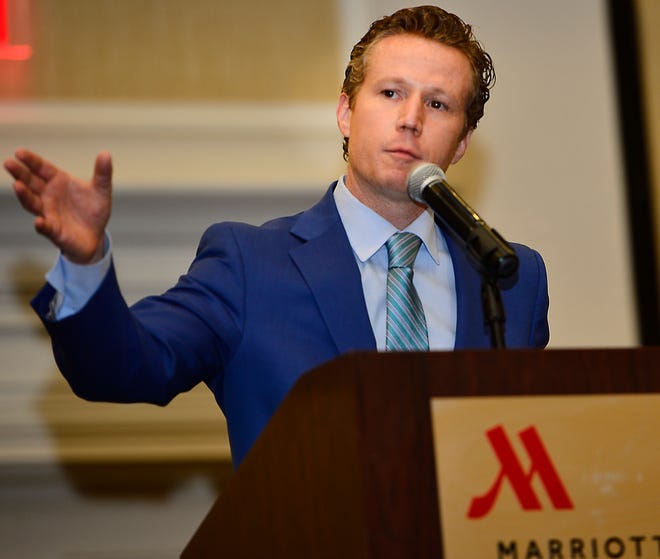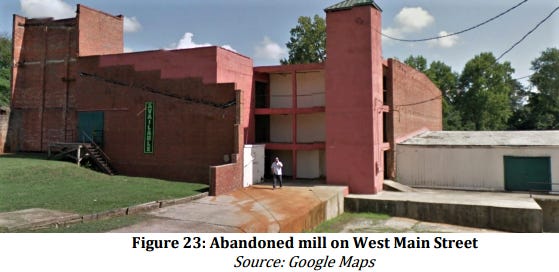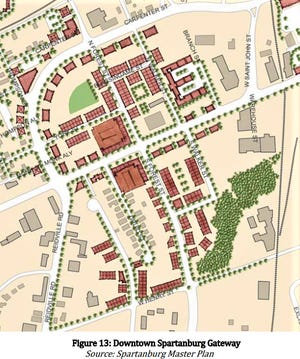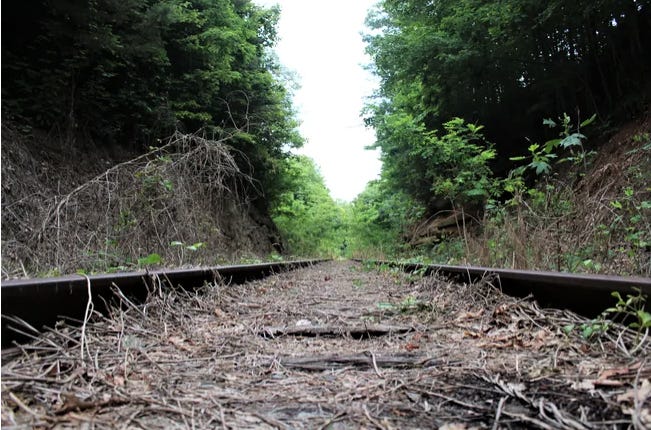$9.5M in Spartanburg earmarks target West Main Street corridor, Saluda Grade Trail project
$9.5M in Spartanburg earmarks target West Main Street corridor, Saluda Grade Trail project
Published by Spartanburg Herald Journal- full article here.
Nearly $10 million in earmarks from this year's $13.8 billion state budget are headed to Spartanburg for two long-term projects that are expected to boost economic growth and create recreational opportunities.
State Reps. Max Hyde of Spartanburg and Rita Allison of Lyman obtained a $4.5 million earmark for the city's West Main Street Strategic Growth Corridor project.
The two lawmakers also got $5 million for the 31-mile Saluda Grade Trail project, which will allow three nonprofits to purchase of the 16-mile South Carolina portion of the former Norfolk Southern rail line. The line will be converted to trails that will connect Inman, Campobello and Landrum northern Spartanburg County to the North Carolina towns of Saluda, Tryon and Zirconia in Henderson County.

In total, area lawmakers obtained $12.8 million in budget earmarks for Spartanburg County, including $1.6 million for Boiling Springs Fire District and $900,000 for Upstate Resource Center in Boiling Springs, Rep. Steven Long; and $300,000 for the Southside Cultural Monument and $490,000 for the Spartanburg Police Department, Rep. Rosalyn Henderson-Myers.
Only one area lawmaker, Rep. Josiah Magnuson of Campobello, voted against the earmarks.
"I vote against almost all earmarks because there is no process for transparency with these funds," the Republican lawmaker said. "Until conservatives like myself began drawing attention to the situation in the last few years, the list of earmark destinations typically was not even published to the public prior to a vote."
West Main corridor in downtown Spartanburg
The 1.5-mile West Main Street corridor is a low- to moderate income area that has seen little investment for decades. Envisioned as a revitalized gateway to the city's downtown, it is designated an opportunity zone, which offers tax credits as an incentive to investors.
Building under demolition:Downtown Spartanburg Grain District building behind AC Hotel under demolition. What we know.
"This particular area has tremendous potential for new investment," said Allen Smith, president and CEO of OneSpartanburg, Inc. "Currently, the area does not reflect our economic momentum, doesn't spur investor confidence, nor does it demonstrate any sense of community pride. The city now has the resources to change that."

A recent Clemson University study looked at the West Main Street corridor, defining the area of the portion of West Main Street and W.O. Ezell Boulevard between the railroad tracks near the A.C. Hotel, just west of the intersection of West Main Street and Ezell Street, and the intersection of Briarwood Road and W.O. Ezell Boulevard to the west.
2021 report:City of Spartanburg launches effort to make downtown's western gateway more appealing
The study noted that in the census blocks immediately to the east of the railroad tracks, the average household income is $81,405 and the population is 81.9% white. To the west of the tracks, the average household income is $27,383 and the population is 70.8% African American. The housing stock in this area west of the tracks consists of 42.4% owner occupied, 45.4% renter occupied and 12.2% vacant.

Current drawbacks in the corridor include poor streetscaping and landscaping, lack of access to green space and a lack of identity, according to the study.
Goals include creating a more pedestrian friendly environment, a safer biking infrastructure, promoting mixed-use development, creating a gateway to downtown and a positive brand of the corridor.

"Fulfilling a longer-term vision to revitalize western downtown and meet a gateway improvement recommendation in the OneSpartanburg Vision Plan, the public will be served by stimulated economic growth, bike and trail features and parking support," Smith said.
According to Rep. Hyde, the $9 million project will include $4.5 million in earmark funds along with $4.5 million in private funds.
Saluda Grade Rail Trail project
According to Rep. Hyde, the $5 million earmark for the Saluda Grade Trail will enable three nonprofits – Play, Advocate, Live Well (PAL); Upstate Forever; and Conserving Carolina – to purchase the South Carolina portion of the rail corridor.
It is estimated to attract 125,000 visitors annually, support 300 jobs and spur development near the trail. A net economic impact of $45 million is projected, according to the earmark description.
Laura Ringo, executive director of PAL, said the first step is to negotiate a purchase from Norfolk Southern. The rail company will then need to go through an abandonment process with the U.S. Surface Transportation Board, she said.
Mary Black Rail Trail expansion:How the $2 million expansion will transform downtown Spartanburg
After that, the nonprofits will work with engineers to plan the removal of old rails into construction of trails. The construction phase will require fundraising, she said. The project could be finished in roughly five years, she said.
"It will have enormous economic impact," Ringo said. "It will give people an opportunity to enjoy the beauty of the mountains, a number of rivers and lake summits. Trails provide significant health benefits, and the Saluda Grade will do just that."

When active from 1878 to 2001, the rail line along the Blue Ridge Escarpment was renowned as the steepest standard gauge mainline railroad ever built in the U.S., Ringo said.
Andrea Cooper, executive director of Upstate Forever, said trails like the Prisma Health Swamp Rabbit Trail in Greenville County are "transformational economic engines."
"They bring more money and jobs to the local economy, boost quality of life for residents and offer a safe and accessible way to spend time outdoors," she said in a press release. "The Saluda Grade Rail Trail will yield a return beyond any initial investment."

Site by: ALINE, A Marketing Company





